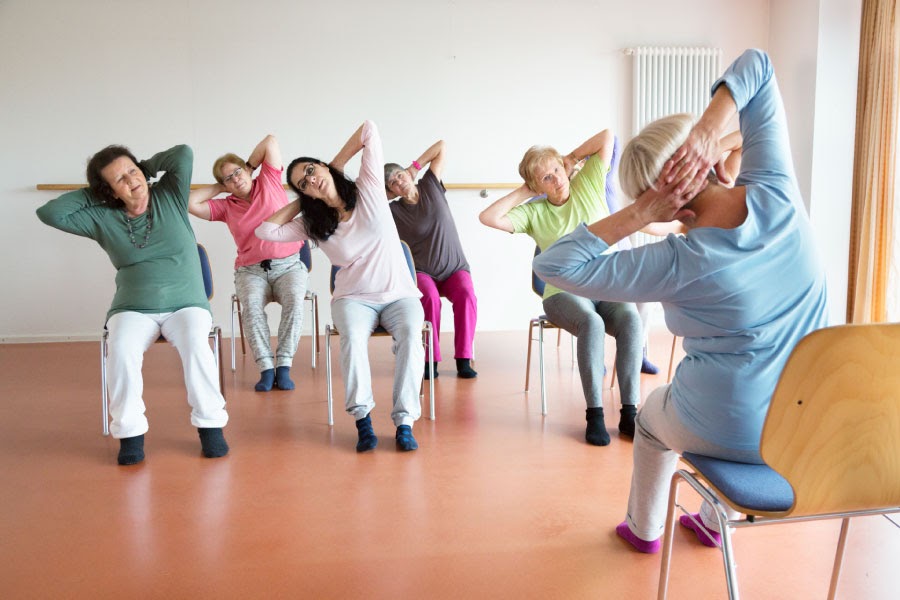5 Benefits Seniors Can Gain from Doing Yoga
A regular exercise plan can help you keep your independence and improve your quality of life. Many older folks, however, struggle to find a safe, low-impact activity that is appropriate for their fitness levels. However, yoga for seniors provides a practical solution.
Yoga is something that anyone, regardless of age, size, or skill, may enjoy. Yes, some people are extremely flexible and make it seem impossible! But that is only a goal, not a requirement. There is no reason why seniors should not enjoy yoga, and there are numerous reasons why they should.
There are numerous advantages to practicing yoga for seniors. We’ve chosen the top five things you should be mindful of, and we’ll go over them together. Please keep in mind that this post is solely for informational purposes and should not be taken as medical advice. Please consult with your physical therapist or physician before starting any exercise routine.
Benefits of Yoga
Yoga Improves Respiration
As we age, we have respiratory limits and reduced tolerance to physical exertion. Anything that decreases the amount of oxygen in the respiratory system might have a detrimental impact on the mind and body. A 12-week yoga practice greatly improved respiratory function in elderly women, according to recent research.
Breathing is the basis of life. Humans can last weeks without food, but only a few minutes without air, so it’s important to keep your respiratory system in good working order at any age.
Yoga Helps Control Blood Pressure
High blood pressure is something we all must keep an eye on and avoid as much as we can as we get older. High blood pressure can be caused by a variety of factors, including a poor diet, high cholesterol levels, a sedentary lifestyle, smoking, and obesity. However, because age can contribute to an increase in blood pressure, prophylactic actions are required for persons of all health statuses.
Even the most basic asanas (positions) in yoga have been shown to help decrease blood pressure. All of these movements are possible for most people of any age, including seniors. These positions help the body relax, reduce stress, and gently stretch the muscles.
Yoga Enhances Balance, Flexibility, Mobility and Strength
Yoga positions’ slow, measured motions can lead to improved balance and movement, which can help prevent falls. Because falls are the largest cause of injury among seniors, yoga can help you improve your mobility and get around more safely.

Yoga Supports Pain Management
Stiff, aching joints and achy bones can make life a bit difficult. People suffering from arthritis, osteoporosis, and other forms of bodily pain can benefit from regular yoga practice. Gentle muscle stretching, bone strengthening, and enhanced blood flow can all assist to reduce pain. The nice thing about yoga is that it can be adapted to suit different abilities, so everyone may benefit from its pain-relieving properties.
Yoga’s mental and emotional benefits can also help with pain management. Deep, controlled breathing, silence, a clear mind, and a sense of tranquillity can all aid in the reduction of stress and anxiety. When stress and anxiety subside, the tension in the body, and sometimes pain, can be relieved. Stiff, aching joints and achy bones can make living difficult. People suffering from arthritis, osteoporosis, and other types of discomfort can benefit from Furthermore, yoga can help to promote better sleep, as well as a higher sense of restfulness and tranquility. Proper sleep, proper breathing, and a sense of relaxation can all help elders manage their pain.
Yoga Lessens the Risk of Depression
When seniors begin to lose their mobility, it can be devastating to their self-esteem. People who have experienced falls or discovered that they can’t stand as long as they used to may become apprehensive and afraid to be out and about, negatively affecting their mental and emotional well-being.
Yoga helps you feel as if you’ve accomplished something significant. Reaching further than previously, holding the position for the duration of each breath, and feeling your body move in unexpected ways makes us feel powerful and strong. Yoga gently prepares the body to balance, stretch, and move in a strong, flowing manner. As a result, seniors can regain their mobility and some of their independence.
How Can Older Adults Get Started on Yoga?
Yoga is easy to learn, but it is important to start slowly and safely. Although most individuals may practice yoga safely, older adults should consult with their doctor to see if there are any poses or exercises they should avoid due to underlying health conditions.
Injuries or strains can result from incorrectly moving through poses, so having a trained yoga instructor teach an older adult the proper method to practice yoga is critical. An instructor will also teach seniors how to use good breathing and relaxation techniques. An instructor may also be able to offer a certain style of yoga, postures, or modifications that are best suited to an individual’s preferences, capabilities, and goals.
Yoga courses tailored exclusively for older persons may be held at senior centers, gyms, and even public venues such as libraries. There are numerous online sites that can help older individuals using various ways.
While many seniors prefer practicing yoga in groups or with teachers, once the basics are mastered, it is simple to practice yoga on one’s own. Some older individuals go to yoga sessions a few times a week and practice at home on their “off” days, while others only practice at home.
Contact Thrive USA Home Care
If you’re interested in our compassionate home care services for you or a loved one, contact Thrive USA Home Care at (301) 882-4717 or email us at info@thriveusahomecare.com.
It’s never too late to start working on healthy aging, and yoga is a great place to start.


